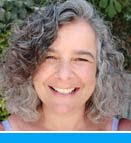My friend Mandy came to visit us last month. She and I were at art school together so I knew (hoped!) that she'd be happy to join me on a walking tour of the Bauhaus buildings of Tel Aviv, something that the hubby and kids were somewhat reluctant to do.
The lively city of Tel Aviv was declared a World Heritage Site by the United Nations a few years ago because of the predominance of Bauhaus (a style also called International) architecture there. Apparently there are over 4,000 Bauhaus buildings in Tel Aviv (and another 1,500 more slated for preservation and restoration), many of them built in the 1930's by German Jewish architects who immigrated to the British Mandate of Palestine after the rise of the Nazis.
Between the First and Second World Wars there was a great deal of building in Tel Aviv because of the growing waves of immigration from Europe. There was a need to build cheaply and quickly and the Bauhaus style, known for its simple, modern buildings without any kind of ornamentation, fit the bill nicely.The buildings were adapted to suit the extremes of the Mediterranean and desert climate. They were raised on pillars to allow the wind to blow under and cool the apartments, as well as providing a play area for children, and were painted white to reflect the heat of the city built on sand dunes. Today these white buildings are the source of Tel Aviv's nickname, 'The White City'.
Our guided walking tour focused on the modern architectural styles of the 1930's in one the 'The White City' main areas, Rothschild Boulevard. We looked at flat roofs, so different from the slanted roofs of Europe, which became the place where social events were held, and at balconies of all kinds of shapes and sizes, but located mainly one on top of the other so that each floor can serve as a ceiling to the balcony beneath it. Walls not only provided privacy but protected against the sun. Large areas of glass that let in the light, a key element of the Bauhaus style in Europe, were replaced with small recessed windows that limited the heat and glare.
Today many of the Bauhaus buildings have been restored to their former glory, and property developers are rehabilitating many more, often adding on expensive penthouses to enhance the structure. The original architects would probably not have approved because it is a step away from the original minimalist Bauhaus style. However, both the newly built and the restored buildings look wonderful. The café society and communal life of the residents, which grew out of the Bauhaus style of architecture when Tel Aviv’s residents took to the streets as their innovatively designed modern buildings became unbearably hot, continues even today. People were out in force on the day we visited and there was even a little yarn bombing going on around some of the trees on Rothschild Boulevard!































4 comments:
What amazing buildings! I love the shapes and textures. It must have been a fun day hanging out with a good friend and enjoying the sites.
Valerie
Everyday Inspired
These buildings look so modern! How innovative working with the climate where they are! The yarn bombing it so cool and fun! Have a wonderful weekend. :)
So interesting! Thank you for sharing. What a great way to spend a day with an old friend.
I always learn so much from your posts, Lisa! Thanks for all of the time you take to make them so interesting. It looks like you couldn't have chosen a better day to take a walk around The White City - what a blue sky!
Post a Comment